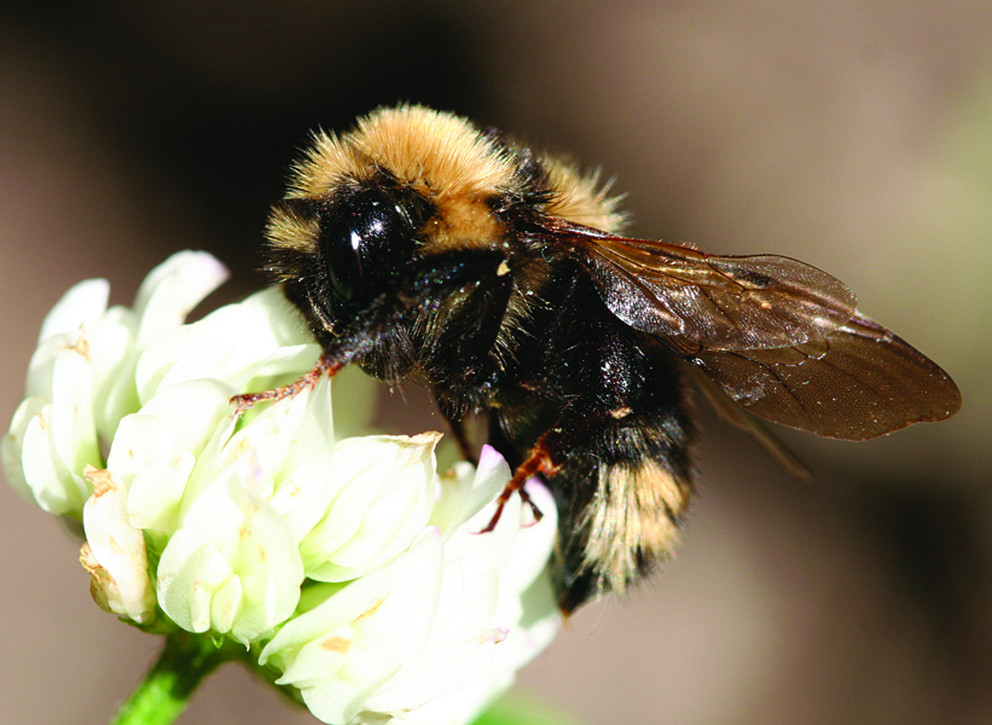Bees' ability to forage decreases as air pollution increases
Air pollutants interact with and break down plant-emitted scent molecules, which insect pollinators use to locate needed food, according to a team of researchers led by Penn State.

A bee gathers nectar from a flower. (Image: Courtesy of USDA Forest Service)
July 6, 2016
"Many insects have nests that are up to 3,000 feet away from their food source, which means that scents need to travel long distances before insects can detect them," said Jose D. Fuentes, professor of meteorology and atmospheric science, Penn State. "Each insect has a detection threshold for certain kinds of scents and they find food by moving from areas of low concentrations of scents to areas of high concentrations."

